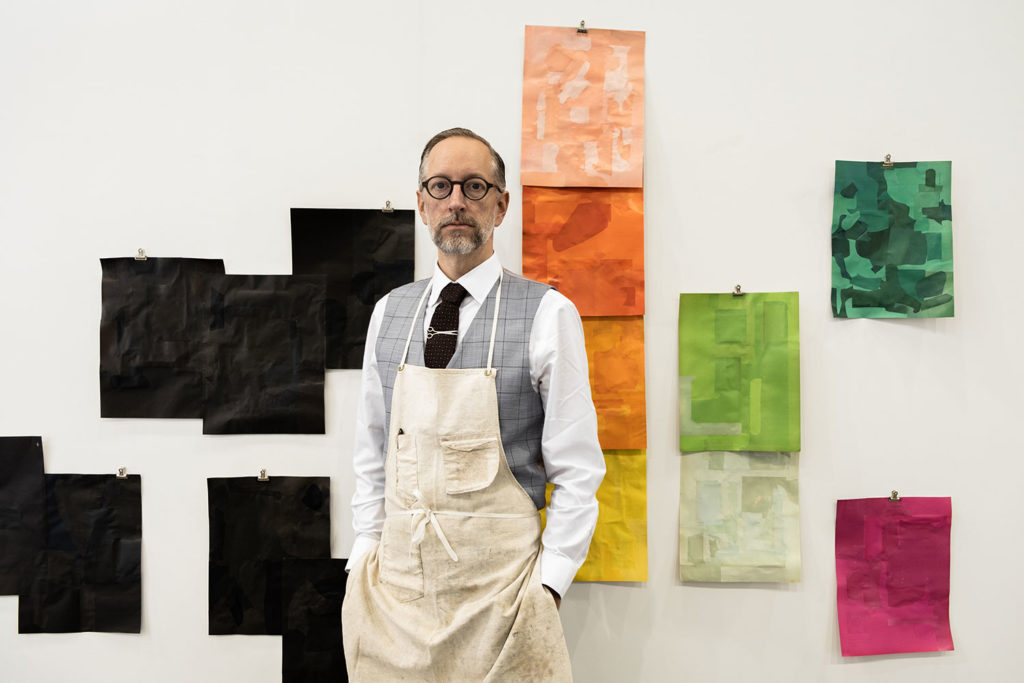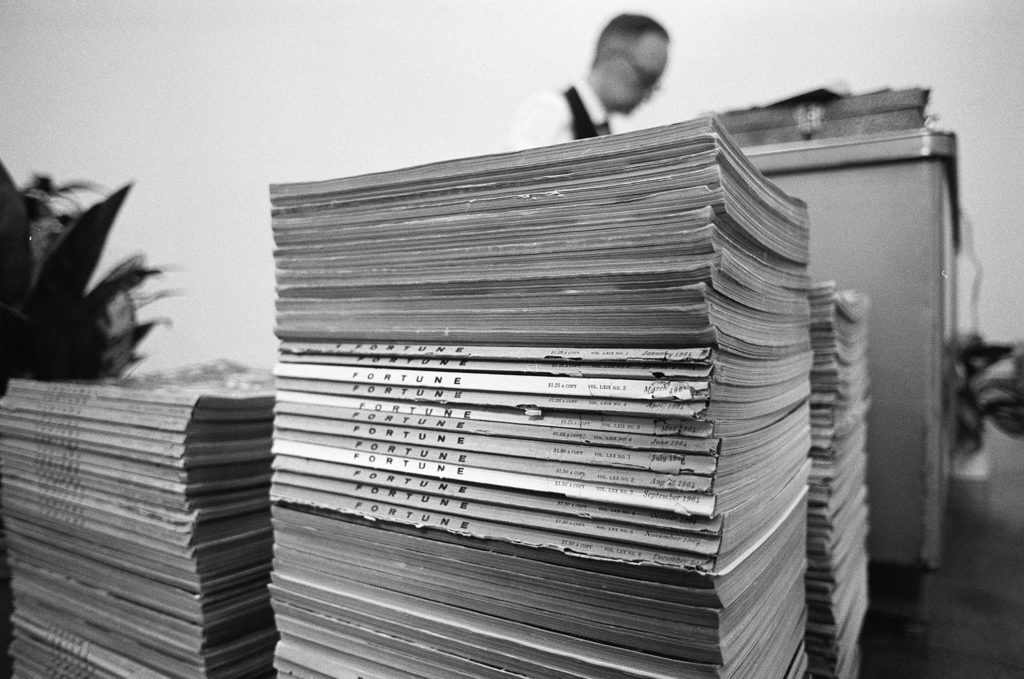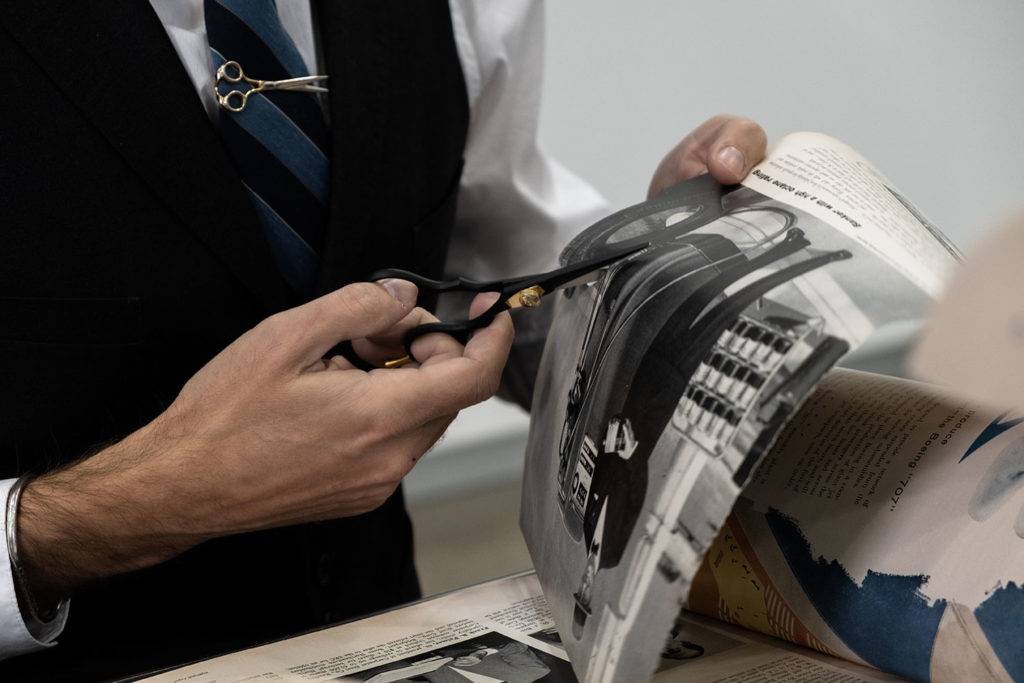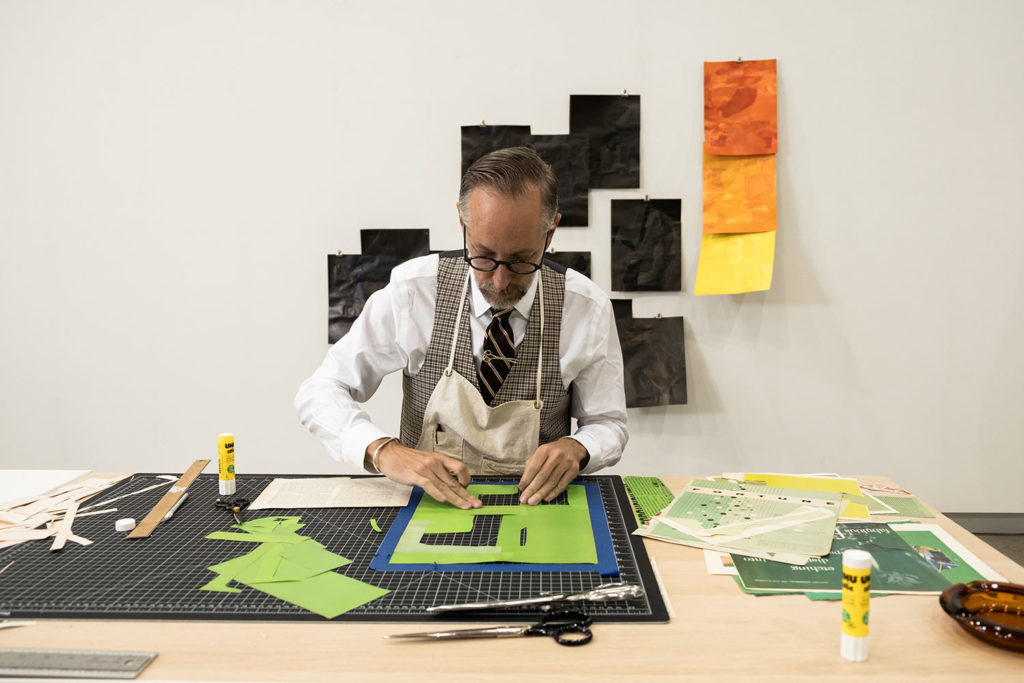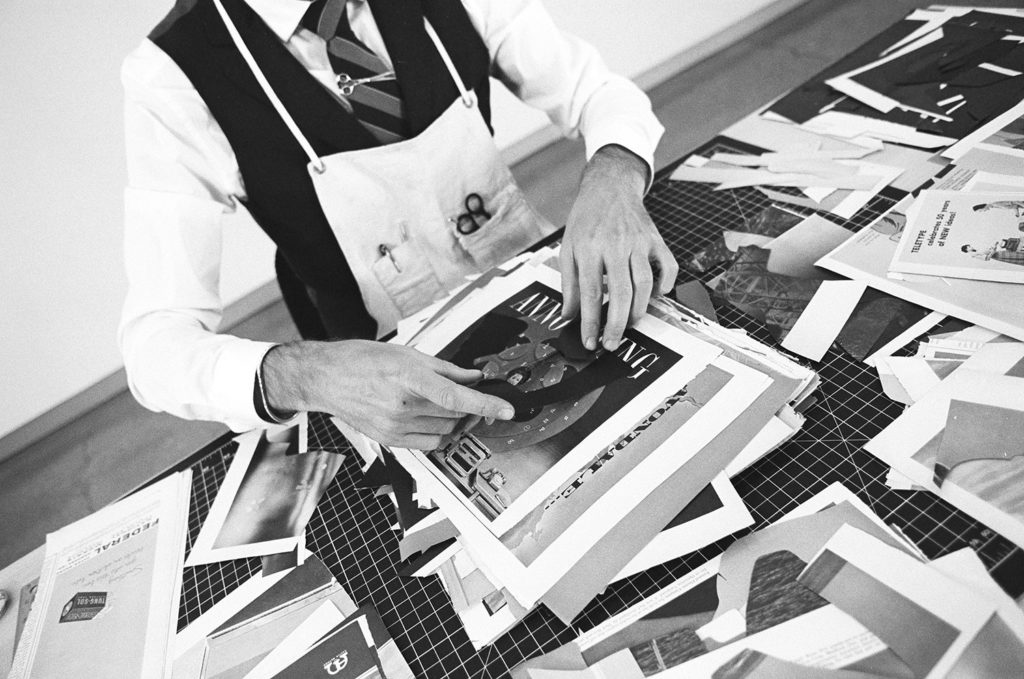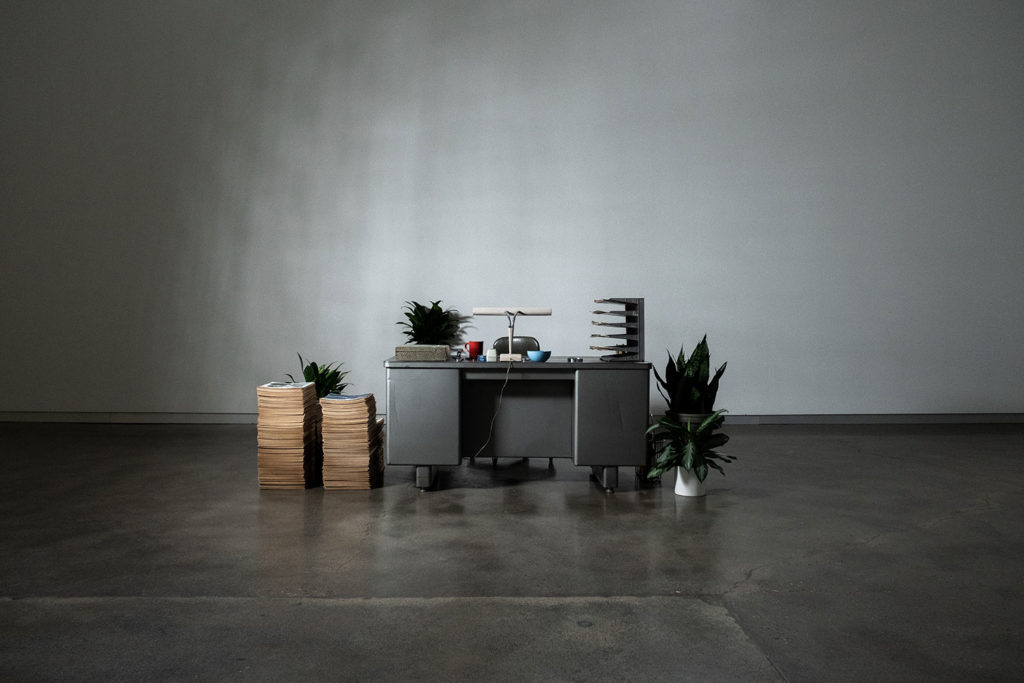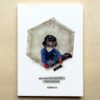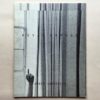TWS –Hi Mike, we’d like to know more about your 9–5 project. To start, Could you please tell us what the project is about and how you will perform it?
MWD –This project is about a lot of things, but primarily about two things: my relationship with my grandfather and the stack of 208 issues of old Fortune Magazines he left me. And it’s about visiting the era that these magazines were published and consumed in. To give myself space to explore both of these avenues I’m dressing in the period (early 1960’s) when these magazines came out and I’ve recreated an office, also from the period where I clock in everyday at 9AM and out at 5PM to also replicate the demands of office life. This process performance is also being captured for a short film.
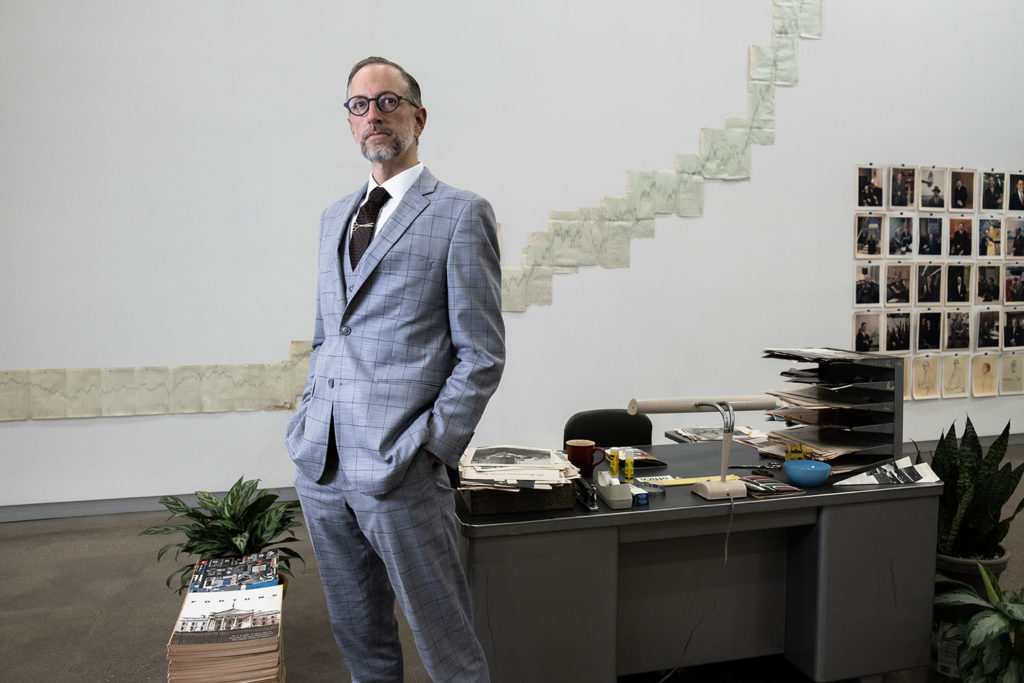
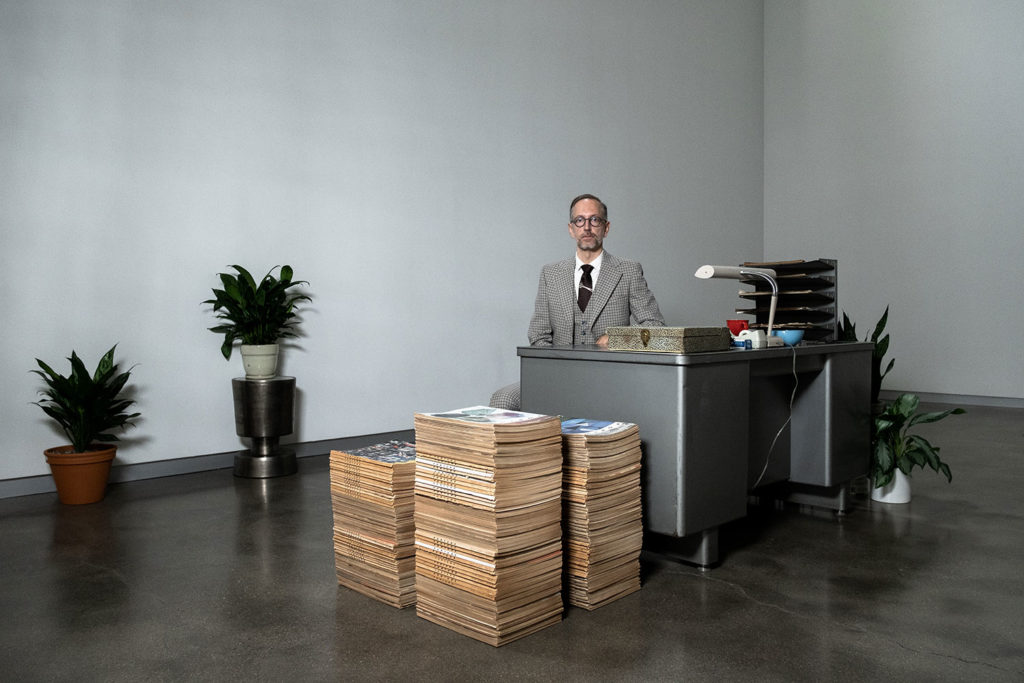
TWS –There are many interesting issues that you’re touching with 9–5. The first one I’d like to comment is the idea of work that you envision in this performative project. I’d like to know what is your vision of the traditional working world and how do you relate it to art as a way of generating value and wealth?
MWD –I’m fairly structured in my process for making work so I think in some sense relating art to “work” doesn’t seem that crazy to me. On that flip side of that the thought of having a steady income related to making art in the way one has while working a traditional 9-5 job is super appealing. I hadn’t really thought of that. Maybe this is really about my desire to make a living off of my art without having to subsidize that income? My moving to Denver was a step in that direction but I definitely had never explored this subconscious notion before, haha, thanks for that prompt! 🙂
TWS –There’s an idea of “lack of freedom” related with 9–5 office jobs which is opposite to the perception of working as an artist. But, on the other hand, working as an artist can be way more time-consuming and less effective in generating income to make a living from art. Is somehow art as we know it today the perfect capitalist artifact? Have you got any thoughts about this?
MWD –At this point in my art career I feel fairly comfortable with my craft. I’m generally looking for limitations or something that challenges me to build off of what I know. I think structuring this project with that “lack of freedom” is within my intention to push myself to continue to grow anyway I can.
As for art as a capitalist artifact, I’m torn. On one hand, I create art because deep down inside I need to and want to connect with others around shared experiences that come up during this process. On the other hand, I’d love to be able to make a living doing just that. I’m not really willing to create art specifically in a direction I believe will make it more likely to sell, but I have to acknowledge the more work I sell the more that allows me time to explore with my art.
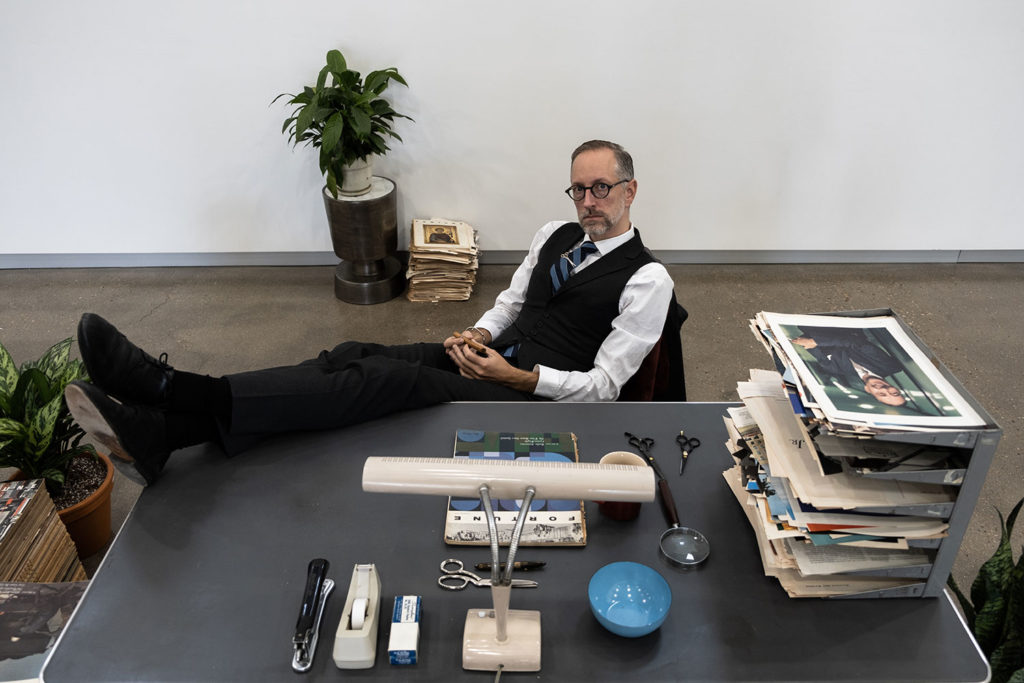
TWS –After 2 weeks working, how do you feel the 40 hours workweek connects with the art practice?
MWD –The first two weeks probably connect more with the 40 hour week work more than the next two will. The first part of my process is mostly me “harvesting” clippings from magazines and organizing them in a way that I can sit and create the art later. It’s definitely repetitive and systematic. That said I may have engineered my environment too well. I sit at my desk and stress about the amount of “work” I have to do. The four super tall stacks of magazines that sit next to my desk are constantly reminding me of how much work I have to do in such a short period of time. It’s taken me several days to let loose a little.
TWS –Another thing that I like from this project is how it plays with the concept of memory/nostalgia. There is a strong reference to how the world was and how it worked in the middle of the 20th century that runs through the whole project. Why have you chosen to make this time reference? What the Golden Age has that you’d like to think about in this project?
MWD –Well, the 208 issues of Fortune Magazines that I inherited from my grandfather span from 1954 to 1972, so I wanted to loosely refer to 1963 which is the median year. Basically, I wanted an environment that reflected what was in print in these magazines, but also the environment the reader may have been sitting in while reading them, not that my grandfather ever read these in a traditional office. The process of researching and tracking down office items for this performance has certainly affected what I see in the magazines. I feel like I have an understanding that I wouldn’t have had, even if it’s just about desks and desk chairs, haha.
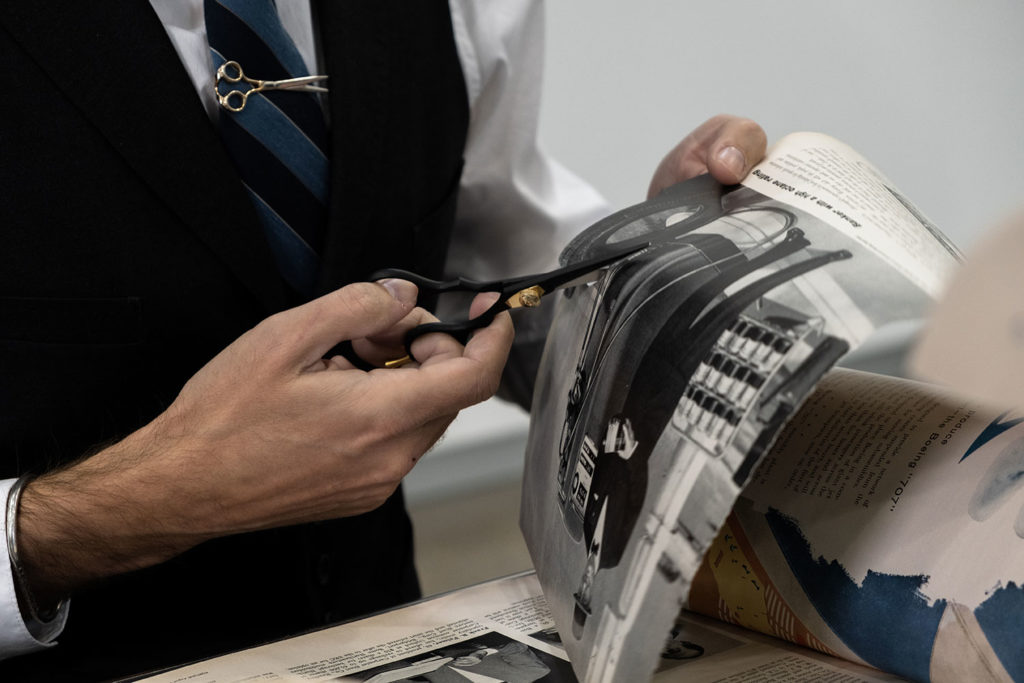
TWS –The performative side of 9–5 interests me in many ways too. It adds a conceptual layer that sometimes contemporary collage misses. What led you to explore performance and how it is influencing and modifying the work that you have been producing?
MWD –Anytime I’m pouring through old material a certain part of my brain is trying to get a sense of what the period I’m looking at was really like. There’s a record of the banal in print that doesn’t make it into the condensed history of any period, I think this is what drew me to older print material in the first place. So, yeah, dressing the part in an old desk from the period is definitely a big indulgence in this direction. But also, for me the performance connects, the process, which connects the source material more closely with the final output of the project. The work at the end will not only be collage, but exclusively created from these Fortune Magazines the viewer can see me deconstructing in the performance film.
TWS –The project description talks about this project aiming to “tracking time and movement through isolation and repetition”. Can you expand on this, please?
MWD –Ah, yeah, as I’ve grown more disciplined as an artist, repetition definitely plays a big role. Not to the extent clocking in and out everyday does, but I do have processes in place that can be fairly repetitive. This allows me to start with what I know and while I’m working through the repetitions I’m able to explore bigger ideas which often steer these actions in another direction. Basically, I feed off of action over inaction, even if I don’t know where I’m going yet, I have to believe that by starting down the path I’m getting closer to where I’m going. And isolation for me always seems to be there when making art, but I think for this project it takes on a little bit more than that. Isolation creates space for more inward explorations, this time around my relationship with my grandfather.
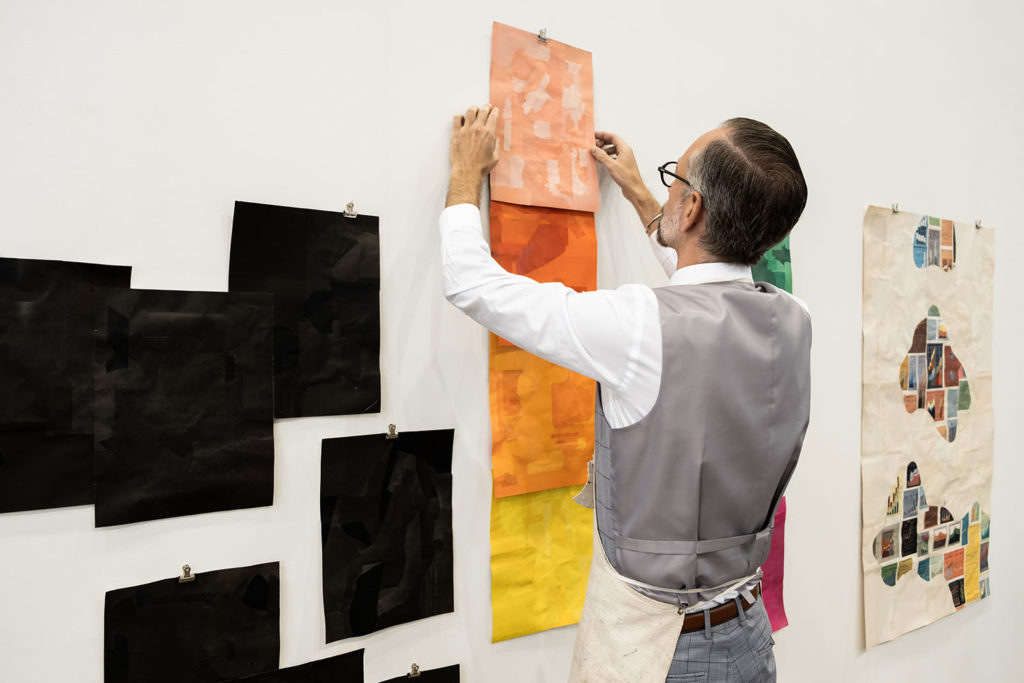
TWS –In a project like this, recording and capturing all what happens during the performance is key. How are you dealing with this side of 9–5?
MWD – I feel very fortunate with this one. Documenting my process has always been super important to me. When I pitched the performance element and the desire to document it for a short film, New Collection stepped in and said they could do it, and with better equipment which also allows for fewer interruptions in the art making process. The hard part is remembering not to go grab my phone to snap a photo while the camera is rolling.
TWS –Lastly, here’s the questions we ask all artists interviewed: What’s your personal definition of collage?
MWD –Hmm, for me, collage is about making something new from something that already exists, whether creating new meanings or forms. I suppose that thought though covers all mediums. Maybe what I associate collage with most is the deconstruction process and the fact that often what’s being deconstructed already has some sort of personality or point of view. Or maybe collage is the ego that says I can create something new out of something that’s already been consumed?
More about Mike DeSutter on his website or Instagram
